Patched or Not, Mass Effect: Andromeda is a Flawed Yet Exhilarating Journey
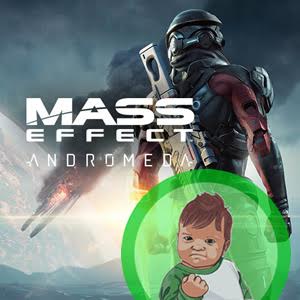
Overall Grade
Pros
- -Explore BioWare's take on a new galaxy
- -Stunning sci-fi atmosphere, interactive hubs
- -Strong TPS controls + biotic/tech casting
- -Dialogue, dilemma, decision role-playing returns
- -Solid, reactive ending to engaging premise
- -JET PACKS
Cons
- -Bugs, some iffy animations
- -Predefined character Ryder limits RP-ing
- -Uninspired lore/design choices
- -Originality and plotting not its strongest suits

Development of Mass Effect: Andromeda — at least, the creative thoughts behind it — likely began shortly after the release of Mass Effect 3 and the divisive reception that its ending received. Yeah, yeah: alarm bells go off at just the mentioning of that ending, but hear this out. Long before BioWare telegraphed the culmination of the trilogy’s storytelling, the longstanding role-playing game makers had two-and-a-half games of variables to keep straight and relevant. This includes whether to cure a disease that plagued a crucial race or whether to broker peace between robots and their creators, as well as a laundry list of characters who could’ve lived and died throughout the series. Creating an ending that split the setting into three drastically different versions of one another was, frankly, the final nail in a coffin that had already been mostly nailed shut. To continue the franchise, the options available to BioWare were in short supply. A total reboot? A canon set of storytelling values? Instead of disregarding choices, the studio behind Baldur’s Gate and Knights of the Old Republic decided to get the hell out of Dodge and jump over to another galaxy, one that’s far, far away from that nest of variables. Had the landing been a bit smoother, Mass Effect: Andromeda would’ve arrived as the ideal clean slate needed by both fans and BioWare.
It’s been a little over a month since the game’s release, and, like many other studios, BioWare has worked diligently to conjure up patches for their latest science-fiction epic, with modifications that range from typical clean-up of bugs to combat balance changes. However, they’ve also responded to critical feedback about some technical and artistic issues, notably in the realism in animations, which resulted in a rather substantial and mostly successful update (Patch 1.05) to face and body appearances. No matter the state of the game in its support cycle, there are certain perceptions about the general direction taken by Mass Effect: Andromeda that patches really cannot impact, though. What BioWare has created with this journey outside the Milky Way is a flawed, overly familiar, yet determined and exciting melting pot of all things Mass Effect, equipped with improvements in many areas — yes, that includes its ending — as well as other areas where they stuck with the status quo when they shouldn’t have and, sure, even subtracted from bits-‘n-pieces of what originally gave the series its magic.
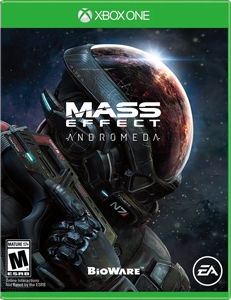
Mass Effect: Andromeda
Developed by: BioWare | Published by: EA
Overall Grade: 78/100
Andromeda takes place 600 years in the future … though as far as the cryo-sleeping travelers aboard the human Hyperion ark ship are concerned, only a brief time has passed since their departure from the Milky Way in 2185, just after the events of the original Mass Effect and before the events of Mass Effect 2. Therefore, everything that occurs in the second and third installments exist as something of a Schrodinger’s Canon: beyond Shepard being the Hero of the Citadel™, all possible decisions made throughout the three games can exist in the player’s mind, or be disregarded as never happening. With the opening cutscene touting exploration and fresh starts as motivation for taking the intergalactic journey, BioWare hammers home the point that they want Andromeda to essentially be ground zero for the characters involved, for the players, and for the studio itself, unencumbered by what may or may not have happened in Shepard trilogy. From here, the game works almost plays out like a mild “Corrupt-a-Wish” version of the ideal Mass Effect game, where every element carried over or improved from previous Mass Effect games has a little something off that keeps its throwbacks from excelling.
We’re introduced to one of two Ryder siblings — either male or female, selected by the player from preset appearances or completely customized — who awakens from cryo-sleep just before their ark ship encounters a celestial anomaly in the far-away galaxy, an event that blocks the path toward their “golden world” colony destination and, eventually, thrusts one of them into the leadership position of Pathfinder. Immediately, the game makes it clear that players won’t be controlling a character of their own creation, but a tweaked version of one of these Ryder twins. This is unlike Commander Shepard, even if he or she was largely a predetermined character: Ryder’s first piece of dialogue, “We made it”, is the same regardless of what version of the character speaks it and completely lacks any player input, a sharp contrast to Shepard’s initial dialogue choice in the original Mass Effect‘s prologue. Remember the selection of backgrounds and reputations from the original Mass Effect? That ain’t here. Each iteration of the player’s Ryder has the same back-story, saddled with having a sibling of the opposite gender and a father, Alec Ryder, who’s a renowned N7 soldier. The type of role-playing has shifted, opting for a streamlined story for the Ryders over freedom of choice. This moves Andromeda closer to the style of role-playing found in controlling different versions of Geralt from The Witcher series than in creating personal characters.
Upon exploring their target “golden world”, Ryder and the Andromeda Initiative — the name of the multi-species organization responsible for getting the ark ships, plural, to the galaxy — encounter a brand-new species, the Kett, with nefarious ambitions involving the ancient technology of the mysterious Remnant, a machine race whose presence is embedded in many worlds across the Heleus Cluster. Yeah, that’s a lot of foreign names to the Mass Effect universe, as expected, yet BioWare doesn’t really capitalize on the potential that this new beginning affords them. Bipedal and firing normal types of guns, the Kett turn out to be little more than rubber-forehead baddies who share a few similarities to Mass Effect 2’s Collectors, both in physical composition and generalized strategy. Meanwhile, the Remnant essentially combine the hostile mystique of the geth with the technological legacy aspect of the Protheans. Between the two, BioWare keeps their motivations on a much smaller scale than with what the end-of-the-world Reapers conducted with their extinction cycles in the Milky Way, but there are a lot of parallels involved with these hostile oppositions to the Initiative and the antagonist forces “back home”, to a point where originality becomes an issue.

Luckily, Mass Effect: Andromeda flexes a lot of the muscle afforded by the new Frostbite engine while creating the setting, providing stunning environments throughout which Ryder will explore — and colonize — while returning the series to some of its mysterious roots about the dangers and delights of traversing the unknown. After struggling with a tweaked vehicle in Mass Effect 2 via DLC (the Hammerhead) and scrapping vehicle exploration altogether for Mass Effect 3, exploration indeed returns to the Mass Effect series in a revamped version of the Mako: the gun-free Nomad. With standard but well-executed driving controls, Ryder and his crew zip around to points on a map that encourage full surveys of the landscape, from areas that can be mined for necessary resources to hidden caves and tucked-away firebases ready for enemy encounters. BioWare clearly didn’t want to make the same perceived mistakes made by the studio’s previous release, Dragon Age: Inquisition, where many of the missions were viewed as different spins on the “fetch quest”, so they’ve emphasized stronger doses of story in the spread-out missions to encourage their completion. One that comes to mind: a series of audio diaries recorded by a deceased worker play while Ryder finishes their job of placing certain beacons across a map, adding a bittersweet punch at the end. There’s thought here.
Despite the adventurous tone of this new setting, one can’t help but feel that BioWare didn’t take enough risks in their presentation of a new galaxy, though, which continues into the introduction of a new species, the Angara, and the member of their species who joins Ryder’s crew, Jaal. With curved bipedal legs similar to other Milky Way species and a facial appearance that’s conveniently supple and attractive in nature, the angarans’ design comes across as too-engineered for appeal to the alien-romance crowd than the culmination of creative ambition; it’s not unreasonable to expect more species akin to the bug-like rachni from the original games in an entirely different galaxy. And again, Jaal borrows character traits of other prior characters in his makeup, acting and even sounding a little like the fish-outta-water Prothy the Prothean, Javik, from Mass Effect 3 … only vastly more emotional and deliberately palatable, since that’s one of his species’ traits. The angarans develop into a crucial feature of the main plot, centered on their clashes with the Andromeda Initiative as colonists and their ongoing conflict with the equally uninspired Kett, so this ends up being a relatively disappointing facet from a science-fiction standpoint.
Consideration went into the companions that get tangled up with Ryder, though perhaps not quite the right train of thought that the writers should’ve placed in them. Each companion feels like a shadow or amalgamation of previous character types from the “original trilogy”, offering both fond, inviting throwbacks and an absence of creativity. The biotic vanguard Cora Harper operates like a fusion of the poise and intrigue of Miranda Lawson from Mass Effect 2 with the dedication and stubbornness of Ashley Williams in the first game, with an attachment to nature and military training with an alien species giving her just enough distinctiveness to be a unique character. Liam Kosta is, in essence, the Jacob Taylor ex-military type with improvements, but still a little uninvolving. The crew just couldn’t get along without a cute, geeky blue-alien bookworm, so we’ve got PeeBee’s adoration for Remnant tech filling the void left by the absence of Liara’s adoration for Prothean tech. Science advisor Suvi distills the religiousness of Ashley into the yeoman-style interactions (and skin-tight uniform) of ME2‘s Kelly Chambers. The resident krogan (the bulky lizard species), Drack, blends lovable mercenary and series favorite Wrex with the gristle and age of another gun-for-hire, Zaeed Massani. Vetra is, in the most positive of ways, a female version of another series favorite, Garrus Vakarian, mixed with a little of the female turian (the bird-like species), Nyreen, from Mass Effect 3’s Omega downloadable content. And so on, and so forth. It’s all identifiable — and romanceable — territory for fans of the series, for better and for worse.
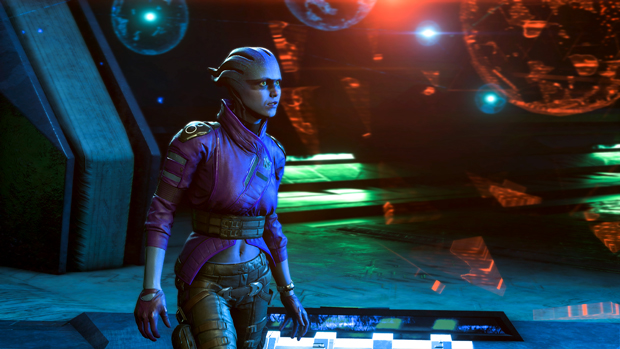
Similar comments can be made toward the role-playing aspects of Mass Effect: Andromeda. Those who have grown accustomed to how the series has shifted in terms of dialogue and controlling a character will feel comfortable, if a bit frustrated and restricted, with the options presented through Ryder. BioWare has, surprisingly, removed the black-and-white red-and-blue alignments of the Paragon-Renegade system, replacing it with a conversation and choice-based framework that’s far more subjective and gray in nature. Different tones, ranging from emotional and logical to casual and professional, match up with the verbal choices, and can even be toggled off in the settings for a more “blind” experience. Like with everything else in Andromeda, however, it comes with a few drawbacks. There’s a fair amount of auto-dialogue this time around (dialogue in which the player has no input on what’s said), and the choices presented often don’t push far enough into the “paragon” and “renegade”-style peaks and valleys to create drastically different versions of the Ryder character. The intention is noble and appreciated; the execution is tame and limited.
Instead, the way the character can really be defined happens through plot-centric choices scattered throughout the game, and there’s plenty to be found in Andromeda. Much like Dragon Age: Inquisition’s inaccurate reputation for only having fetch-quests, it’s inaccurate to say that Andromeda doesn’t have the same kind of tough decisions that the original games had. Ryder gets put in the position to make some hefty choices about leadership throughout the Heleus Cluster and the Andromeda Initiative itself, as well as smaller ones involving murder investigations and the legacy of scientists, which forms into a similar experience to the types of judgments that Shepard would dish out throughout the Citadel in the original trilogy. BioWare has made a strong effort to retain that element in Andromeda, and while not without its stumbles in logic, they’ve done so in a variety of ways. Moreover, some of the bigger choices do have a perceptible — if not entirely tangible — impact on how the adventure comes to a close in the final battles. A complaint frequently lobbed at Mass Effect 3 was that there wasn’t enough representation of decisions made in the final military skirmishes leading to the end of the game, and Andromeda earnestly attempts to not make those same mistakes again.
But enough about that pesky role-playing experience. How’s the combat? That can be answered with two words: JET PACKS. Fundamentally, the third-person shooting and upgrade systems play out like a refined blend of Mass Effect 3’s single and multiplayer controls, both with the precision of the gunplay and ability casting (biotics and tech) as well as the unfortunate streamlining of the power loadouts, allowing only three active abilities to be usable at a given time. Granted, the game allows the player to switch skill concentrations and loadouts on the fly, but the inability to select other powers from a wheel mid-combat can be a frustrating setback. The big change, both in firefights and in general movement around environments, comes in the ability to launch high in the air with a jet pack (or the magical biotic-user equivalent), and the dodging, lunging, and levitating for a higher vantage point that this addition allows — either to unleash bullets or to “cast spells” — makes for an exceptionally intuitive and enlivened evolution of the Mass Effect model. It’s going to be hard to go back to the original trilogy’s movement limitations after this.
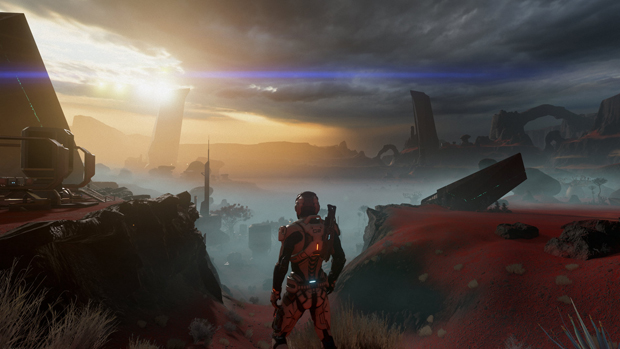
Unfortunately, as of this writing, it wouldn’t be hard to go back to the original trilogy’s appearance and weapon customization options after seeing how Andromeda tinkered with what already worked. To call the character creator “disappointing” would be a bit of an understatement: after choosing one of nine preset faces, the player can tweak hairstyles, skin tones, height and width of their features, and whether they’re rocking scars or tattoos, but they can’t manually select from different shapes of eyes, noses, mouths, and other things freely. Sure, this has game design implications – picking one of the nine preset faces dictates how Ryder’s father will look – but the boundaries it places on how individual Ryders can look is a monumental step back from customizing Shepard (let alone the surprisingly strong creation interface from Inquisition). Crafting weapons and navigating the research/development function of the game is also an exercise in patience and tolerance: some terrific artillery and armor can be made with the right R&D and mined resources, but cycling through the interface makes it an unpleasant process. Text-based menus are only a plus when they’re intuitive, and this toggling back and forth between pages isn’t intuitive enough. BioWare has both expanded and added obstacles to customization, yet another double-edged sword.
Speaking of facial appearances … yes, Andromeda started things out on the wrong foot with its animations. The last thing BioWare needed after coping with the issues of Mass Effect 3’s polarizing ending was an issue that could easily be turned into an internet joke (or jokes), and a handful of wonky facial reactions and body movements provided the studio’s unswerving critics plenty of ammunition. They were quick to fix the issues, though, and that hefty update released a few weeks after the game’s release made some rather dramatic changes to many areas, eliminating weird walking animations and blank-stare, emotionless faces with proper motion and improved shading/lighting. The response to these points may have been exaggerated, since the vast majority of the work put into Andromeda’s designs are well-executed, but it’s hard to dispute how much better the Andromeda experience flows when BioWare poured even more work and refinement into making certain faces not look tired.

These are all issues that can be acclimated to, though — every one of them — and once the player has found their groove with Mass Effect: Andromeda, they’ll discover a sprawling space-opera filled with a lot of passion, throwbacks, and general response to criticisms leveled at the previous games. BioWare has created a threat in the Kett that’s smaller in scope than the Reapers yet dangerous to the galaxy’s safety, hinged on an incrementally progressive story that gives breathing room to the game’s pacing; they’ve created a sense of progression with the colonization initiative that invites the player to continue exploring and returning to settled planets’ hubs; and they’ve created a vibrant living space in Ryder’s transport ship, the Tempest, where characters move about and chat like a real vessel. More importantly, they’ve well-and-truly listened to feedback about the previous game’s ending: the weird twists, mind games, and monumental choice-making that weighed down Mass Effect 3’s final scene have been replaced with a far more rousing, battle-driven climax that subtly changes in appearance based on the choices made throughout the game. They heard the gripes players let out at the studio’s comments about that game potentially being too “video-gamey”, and they’ve delivered something incredibly fun to play from start to finish that isn’t afraid to be a game, whatsoever.
That said, Mass Effect: Andromeda clearly could’ve been a more polished, versatile fresh start for the series than where it has ultimately landed after launch, pre- or post-patch. There are so many things that it improves upon and strengths that it bundles together from the original trilogy that the foundation’s there for it to have potentially shot into the stratosphere as, perhaps, the best game of the lot, yet for every small step or giant leap forward that it takes, something causes it to take a small step or giant leap backward. Andromeda, therefore, hovers somewhere in the middle of the spectrum of BioWare’s catalog, at a time when they really could’ve used a full-on victory. It doesn’t mark a complete return to form for the studio as role-playing game makers, yet it does suggest that they’re charting the right course to eventually arrive where they need to be at in their niche genre, and there’s plenty of intriguing things going on in this new galaxy that they’ve dreamed up to desire a return trip there for future installments.

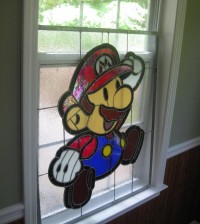

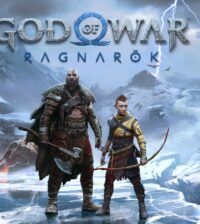
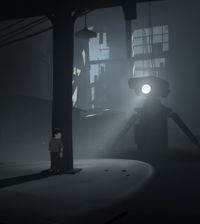


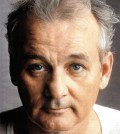

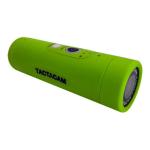



Alex
August 4, 2017 at 10:42 am
Is it really good? rating is very low.